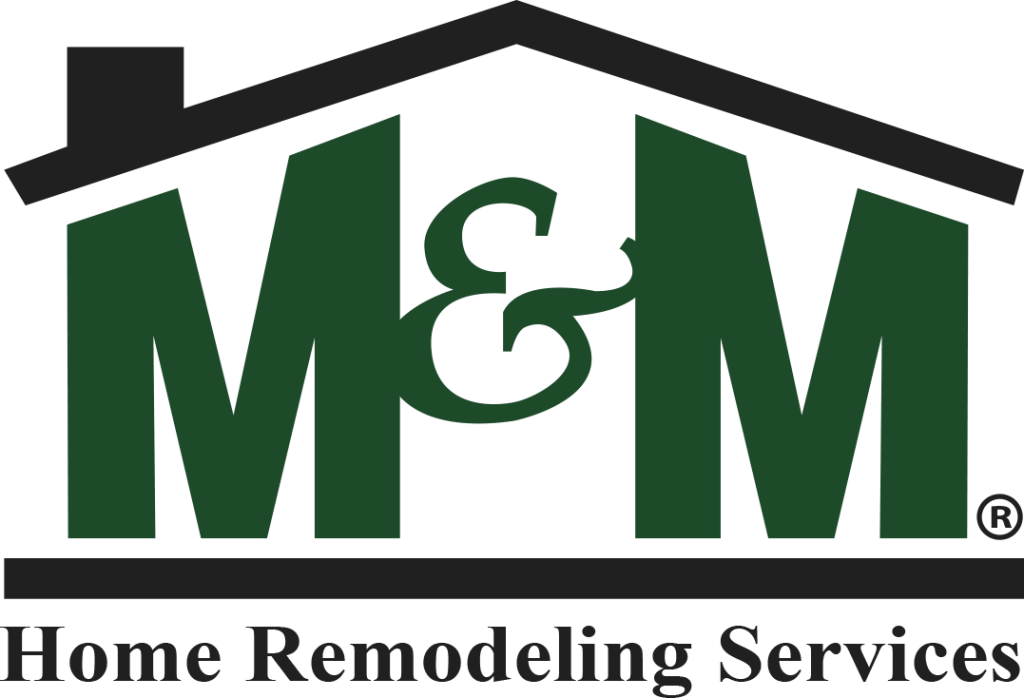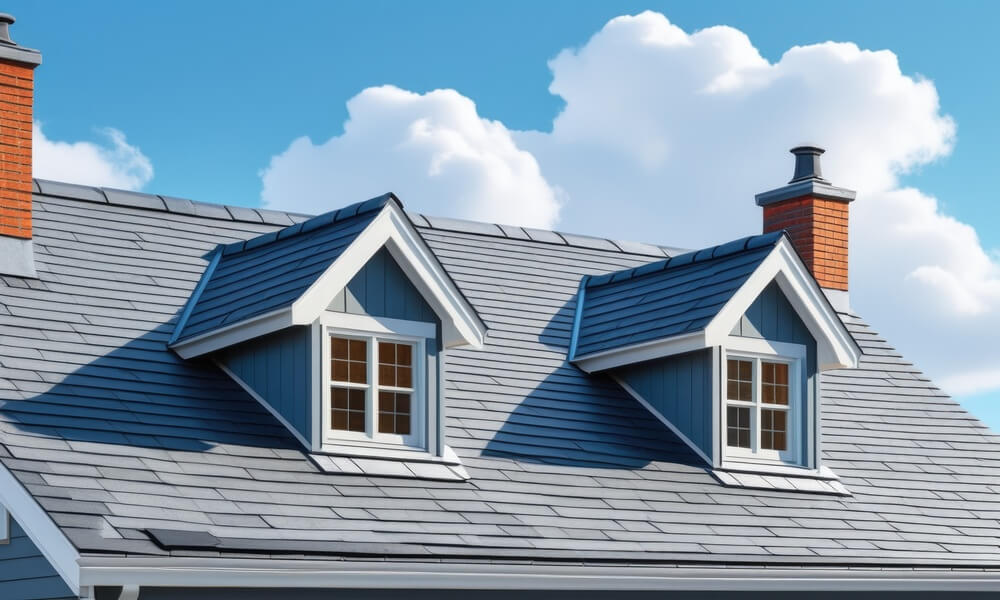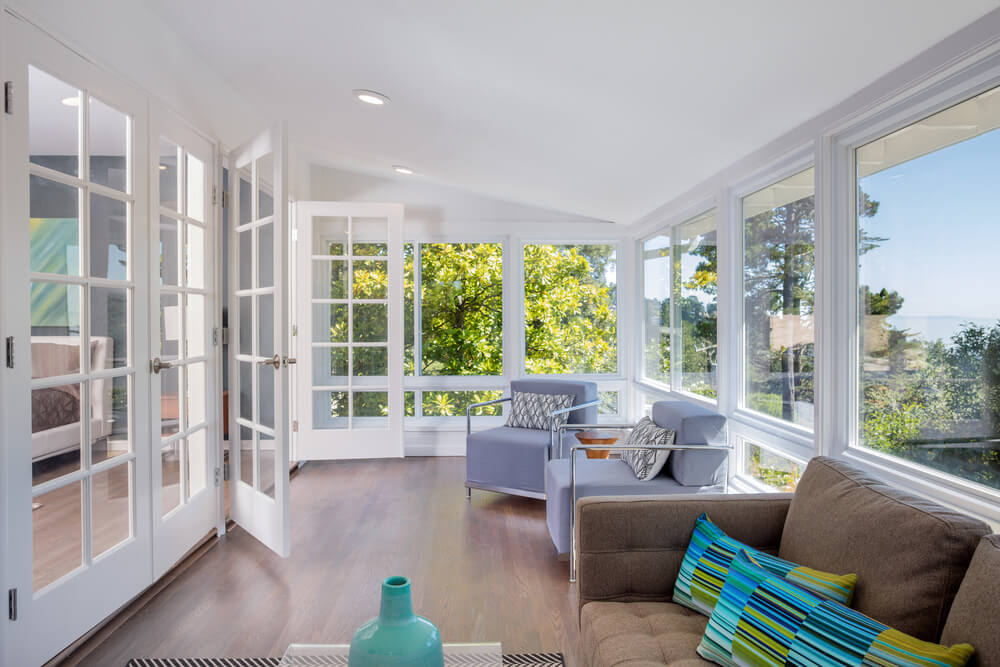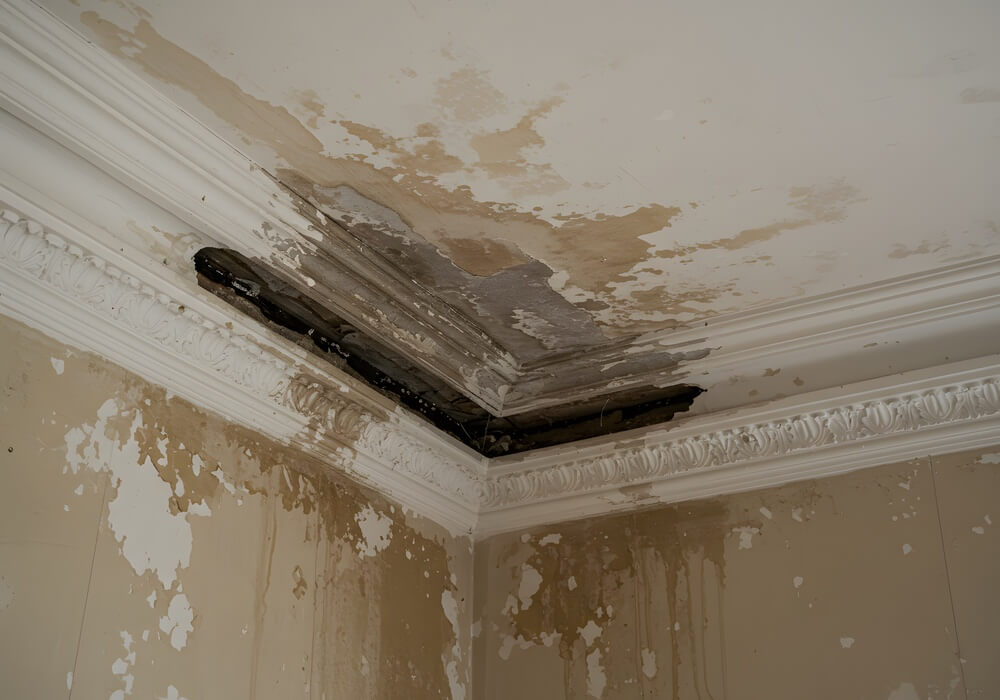In Chicagoland and Northwest Indiana, where snowy winters, heavy rains, and strong summer winds put every roof style to the test, homeowners need options that balance curb appeal with lasting performance.
The gable roof is one of the most commonly found roof types in our region—seen on everything from historic Chicago houses to modern builds in St. Charles—thanks to its timeless design and ability to handle Midwest weather.
In this guide, we’ll explain what a gable roof is, explore its variations, and compare it to other popular styles so you can choose the right fit for your home.
Key Takeaways
- A gable roof features two sloping sides that meet at a peak, forming triangular ends on many Midwest homes.
- Common gable roof types include open, box, Dutch, flying, and half hip, each with unique designs and functions.
- Advantages include more attic space, better ventilation, lower cost, and durability, while drawbacks include wind damage and ice dams.
- M&M Home Remodeling Services provides certified installation and expert comparisons for gable roofs across Chicagoland and Northwest Indiana.
What is a Gable Roof?
A gable roof is a traditional roof style where two sloping sides meet at a single peak to form triangular gable ends. The sides slope downward to shed snow and rain efficiently, a valuable feature in cold climates like Naperville, Crown Point, and Valparaiso.
Types of Gable Roofs
If you’re considering a roofing upgrade, it helps to know the types of gable roofs available. Below are some of the most frequently seen options for local homes.
Open Gable Roof
This design features two sides that meet at a ridge, with vertical ends left open. Popular in Chicago’s historic neighborhoods, open gables pair well with colonial-style homes, stone details, and wide eaves.
Box Gable Roof
A box gable has enclosed roof sides, creating a square structure or rectangular shape that suits contemporary homes in cities like Joliet. The solid gable ends add strength against wind damage and give a neat appearance.
Dutch Gable Roof
Also known simply as a Dutch gable, this combines a gable with a hip roof section at the top. In places like Crete, many homeowners choose this style for its balance of height, weather-resistant performance, and distinctive form.
Flying Gable Roof
The flying gable roof extends the gable beyond the walls, creating dramatic overhangs. It’s a bold roof design that can provide shade for a porch while enhancing curb appeal in suburban city neighborhoods.
Half Hip Roof
A half hip roof blends gable and hip elements, where the upper portion has sloping sides that transition into short hip ends. This design is ideal for resisting high winds while maintaining some gable-style attic space.
Gable Roof Advantages
Gable roofs offer practical benefits that matter in Chicagoland and Northwest Indiana’s demanding weather. Here’s why many homeowners choose this roof structure for lasting performance.
More Attic Space
Thanks to their steep pitch, gable roofs provide more attic space than many other roof styles, perfect for homeowners in cold climates who need storage for seasonal items or want to add vaulted ceilings.
Better Ventilation
Homes with gable vents benefit from better ventilation, which is especially helpful in humid Midwest summers and during snow seasons when moisture can build up.
Extra Ventilation
Beyond basic airflow, the vertical ends of a gable allow for extra ventilation options—ideal for keeping roofing materials dry in cold climates like Northwest Indiana.
Simple Design and Lower Cost
With a simple design using straightforward roofing materials, a gable roof can often be installed more affordably for homeowners in areas like Joliet or Valparaiso.
As a GAF Master Elite® and Owens Corning Platinum Preferred Contractor, our team at M&M Home Remodeling Services installs gable roofs using top-quality materials backed by some of the strongest warranties in the industry.
Gable Roof Disadvantages
Even the most familiar roof styles have their trade-offs. For homes in Chicagoland and Northwest Indiana, certain gable roof designs may face challenges.
Here are a few considerations to weigh before choosing this roof style for your home.
Less Attic Space in Certain Styles
Variants like the half hip roof or designs with two different slopes may result in less attic space, limiting storage or finished-room potential compared to a full gable.
Vulnerable to Wind Damage
In open areas, the vertical ends of a gable can catch high winds, causing uplift. Proper diagonal bracing and secure gutters help reduce this risk in exposed Midwest cities.
Susceptible to Ice Dams
Without balanced insulation and ventilation, the eaves can accumulate ice dams, particularly in older homes with different heights on their roof sides.
Comparing Gable Roofs to Other Local Roof Styles
Choosing the right roof style means balancing curb appeal, durability, and function for your specific home and climate. Here’s how popular gable variations and other roof types compare side by side.
| Roof Styles | Local Use | Advantages | Disadvantages |
| Open Gable | Historic homes in Chicago | More attic space, attractive form | Wind vulnerability |
| Box Gable | Modern builds in Joliet | Strong square structure, neat lines | Less decorative |
| Dutch Gable | Custom builds in Crown Point | Stylish, weather-resistant | Higher cost |
| Flying Gable | Architect-designed homes | Distinctive look, porch shade | More complex framing |
| Half Hip Roof | Wind-prone towns near Lake Michigan | Better ventilation, wind resistance | Less attic space |
| Hip Roof | East Coast-style homes and New England influences | Stability in high winds | Limited space |
| Mansard Roof | Historic colonial-style homes in Pullman | Full-story upper floor | Costly repairs |
| Pyramid Roof | Small structures, gazebos | Excellent in cold climates | Minimal storage |
Start Your Gable Roofing Project with Local Experts
With their balance of timeless curb appeal and reliable performance in Midwest weather, gable roofs remain one of the most practical and attractive choices for local homes.
Whether you’re replacing a gable roof with two gable roof lines in Naperville, restoring a New England-inspired house in Chicago, or comparing roof designs for your next home search, M&M Home Remodeling Services has you covered.
Our team brings over 48 years of local expertise, delivering durable roofing materials, expert installation, and long-term peace of mind. Schedule your free estimate today to see how we can protect your home for years to come.
Frequently Asked Questions
How does a pitched roof compare to a gable roof for Midwest weather?
A pitched roof offers flexibility in slope, while a gable roof focuses on peak efficiency. M&M helps homeowners choose the most weather-ready style for Chicagoland and Northwest Indiana conditions.
Can a gable roof include dormers for added space and light?
Yes, dormers can be added to expand usable space, increase light, and improve ventilation. M&M designs and installs dormer-integrated gable roofs tailored for Midwest weather challenges and local architectural styles.
What happens to the other two sides of a gable roof during installation?
The other two sides, called gable ends, are built vertically and sealed to block moisture. M&M ensures durable materials and expert craftsmanship for long-lasting protection in Midwest climates.
Is a lower angle or a flat surface better for my roof design?
A lower-angle roof may reduce visibility and runoff speed, while a flat surface limits drainage. M&M evaluates your property to recommend the safest, most efficient option for local weather.




